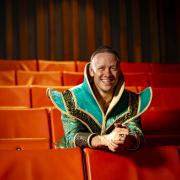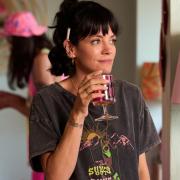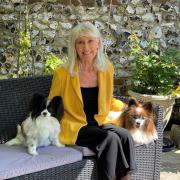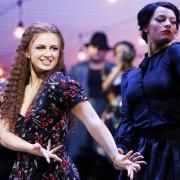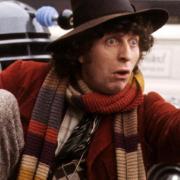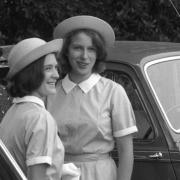Many of us have strong childhood memories of seeing Chitty Chitty Bang Bang in the cinema and now there's a new sequel for the 21st century. Kent Life meets author Frank Cottrell Boyce and explores the book's Kent connections
Many of us have strong childhood memories of seeing Chitty Chitty Bang Bang in the cinema and now there’s a new sequel for the 21st century. Kent Life meets author Frank Cottrell Boyce and explores the book’s Kent connections
Ian Fleming’s passion for cars is well known from his Bond novels and he gave it free rein when creating Chitty Chitty Bang Bang: The Magical Car, a tale he originally made up as a bedtime story for his young son, Caspar.
When Fleming later had a heart attack and was forbidden from using his typewriter by his wife, who had ordered him to rest, he wrote out the Chitty Chitty Bang Bang stories in longhand, instead of working on his new Bond novel.
Fleming died less than two months before the book was published in 1964. It was illustrated by John Burningham and dedicated to the real Chitty Chitty Bang Bang, built by the racing-car driver Count Zborowski and his engineer Clive Gallop in the 1920s.
The Chittys (there were three; a fourth, much larger car known as the Higham Special was being built at the time of Zborowski’s death in 1924) were built and stored at Higham Park, Zborowski’s Kent country house at Bridge. The cars were so loud that Canterbury reportedly passed a by-law prohibiting them from entering within the city walls.
Although in the film the name “Chitty Chitty Bang Bang” came from the noise the car made, for the real cars it actually comes from the words to a First World War bawdy soldiers’ song about officers based in France on shore leave.
The coachwork for Chitty 2, which had an 18.8 litre Benz Bz.IV aero-engine, was carried out by Bligh Brothers of Canterbury.
Former teacher Ian Moat, who lived in the city during the war and whose father was Chairman of Bligh Bros, was a guest of honour at the magical car’s unveiling in the county with so many Ian Fleming associations – fittingly, at a primary school playground in Canterbury.
Now, almost 50 years after he first created her, the Ian Fleming Estate has invited best-selling children’s author Frank Cottrell Boyce to continue the adventures of Chitty Chitty Bang Bang. The new story is beautifully illustrated with black-and-white line drawings by the illustrator and animator Joe Berger.
Frank Cottrell Boyce weaves the magic of Ian Fleming’s original tale into a new 21st-century adventure that readers of all ages will love (this one certainly did!), taking his very modern family the Tootings to the corners of the earth at the wheel of fiction’s most famous flying car.
Only this time it’s a camper van, rescued and restored by Tooting father and son that just happens to get fitted with a rather special Zborowski engine found abandoned up a tree. However, in the author’s words: “It really was more than just an engine, it was the whole insides of a vast, vanished car.”
And of course Ian Fleming’s links with Kent, the county of his birth and death, are all part of the magic. Born at Pett’s Bottom, near Canterbury, he was a member of the Royal St George’s Golf Club at Sandwich, which he used as the setting for the famous golf match between Bond and Goldfinger.
Much of Moonraker takes place on the coast to the north of Dover, just a couple of miles from St Margaret’s Bay where Fleming and his wife Anne owned a house, White Cliffs, which they in turn had bought from No�l Coward in 1951.
Fleming died in Canterbury in 1964 at the age of 56. He did not live long enough to see his most famous creation become a multi-million dollar industry, and one wonders what he would have thought of his son’s bedtime story becoming one of the best-loved children’s movies of all time.
What I am certain is how much he would love the way Frank Cottrell Boyce takes the story forward for a new generation. Speaking at Canterbury Heritage Museum, Liverpudlian Frank tells me how he approached the task: “My ideal is to create real pleasure for adults but it still to be a children’s book. Chitty comes with nostalgia built into it, so I didn’t have to work too hard at that, and there’s lots of James Bond-type stuff in there too.
“The Flemings approached me and I was very thrown by it – it was the 50th anniversary and they rang up and asked if I wanted to do the sequel. I went down and talked to my children and there was no discussion about it – I was doing it! My daughter, 10 at the time, said, that’s not a book, that’s a party!”
And it was a child who brought Frank to the Flemings’ attention. Actress Lucy Fleming, Ian Fleming’s niece, just happens to be a neighbour of the film director Richard Curtis and was talking to him about the planned sequel.
“Richard’s little son apparently said ‘Frank’s books are really good!’ So we met and we hit it off. Only the car has remained from the original but they were quite happy for me to be as innovative with it as I liked,” says Frank.
As well as being a children’s author, with hits like Millions, Framed and Cosmic, Frank is an established British screenwriter whose credits include God on Trial, Welcome to Sarajevo, Hilary and Jackie and 24 Hour Party People.
He says he is the “exact opposite” of Roald Dahl, who wrote the screenplays for both the James Bond film You Only Live Twice and the 1968 version of Chitty Chitty Bang Bang.
“Roald Dahl was desperate to be a screenwriter but ended up as a children’s author, and I was desperate to be a children’s writer but was always a screenwriter. It was great for me to be finally working on film sets that I could bring my kids to!” says Frank, who is married with seven children.
There’s an awful lot of information packed into the book’s 216 pages – is Frank a motoring enthusiast? “I am absolutely not a petrol head, I have no idea about cars, so it was good fun to look it up as it was all new to me,” he laughs.
“I found someone who’d restored camper vans and of course once I’d started to look up about the real Chittys, I just fell in love with Count Zborowski. What a great story that is. He raced with this group called the Bentley Boys and it was all very glamorous and dashing.
“When you think about it, in the 50 years since the book was first published, it’s very hard to think of things that are genuinely magical and in all that time we still don’t have a car that can fly. So you have to hold on to the magic.”





